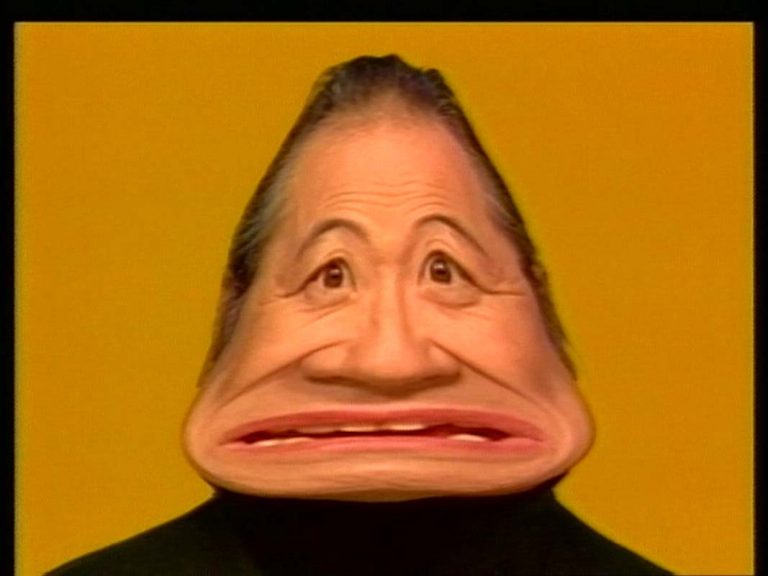We acknowledge the Traditional Owners of the land on which the Queensland Art Gallery | Gallery of Modern Art stands and recognise the creative contribution First Australians make to the art and culture of this country.

Takahiko Iimura / Japan/United States b.1937 / Performance: AIUEONN Six Features (still) 1994 / Videotape: 8 minutes, colour, stereo / The James C. Sourris AM Collection. Purchased 1999 with funds from James C. Sourris through the Queensland Art Gallery Foundation / Collection: Queensland Art Gallery | Gallery of Modern Art / © Takahiko Iimura
Takahiko IimuraPerformance: AIUEONN Six Features 1994
Not Currently on Display
Performance: AIUEONN Six Features investigates the relationship between words, sound and image, with Takahiko Iimura juxtaposing the vowel sounds and characters of the Japanese and English (Roman) alphabets. The work uses the hiragana system of characters, which employs five vowels and ‘NN’ (a character that is not a vowel, but sounds like one). The vowels appear in a different order to the English version of the same vowels — ‘A-I-U-E-O’, rather than ‘A-E‑I‑O-U’.
Exhibited as a single-channel video, as well as a multi-channel installation and performance work in which the artist participates and interacts with the video image, Performance: AIUEONN Six Features is the second version of the single‑channel work described by Iimura as ‘a recreated version of the performance’.1 It uses digital manipulation to grotesquely distort the artist’s features while he enunciates vowel sounds on camera in English and Japanese. The work attempts to deconstruct the nature of seeing and hearing — specifically, the televisual relationship between image and sound, which, with the development of video technology, altered dramatically from the conventional linear relationship found in film.
Since the 1970s, the language and conventions of mainstream television, itself radically transformed with the introduction of video, have tended to level the complexities of difference and cultural identity. Here, Takahiko Iimura playfully questions the semiotics of those assumptions.
Endnotes:
1. Takahiko Iimura, The Collected Writings of Takahiko Iimura, Wildside Press, Rockville, Maryland, 2007, p.112.
Takahiko Iimura, born in Tokyo in 1937, graduated from Keio University, Tokyo, in 1959. Takahiko Iimura’s first experiments with video were prompted by his introduction to Korean-born media artist Nam June Paik in the late 1960s. Following his initial meeting with Paik in Tokyo, Iimura travelled to New York where Paik was working with televisions as a form of sculpture, including the distortion of TV signals using magnets.
Iimura had worked with experimental film since the early 1960s, but the emerging medium of video represented the possibility of a fresh direction. Video was a radically new phenomenon in the mid to late 1960s, and Paik and Iimura were some of the first artists to explore the potential of the medium. Video has been marked by experimentation and innovation in the hands of artists, while simultaneously being adopted as a popular and increasingly accessible mass medium. In Europe, America, Asia and the Pacific, artists have used video in an extraordinary range of ways to question and expand ideas of representation and the moving image.
Discussion Questions
1. Watch a sample of the artwork. Look at yourself in the mirror or facing a friend and carefully say each vowel. What do you notice about how the shape of your face and mouth changes with each letter?
2. How does the work deconstruct the relationship between words, images and sounds?